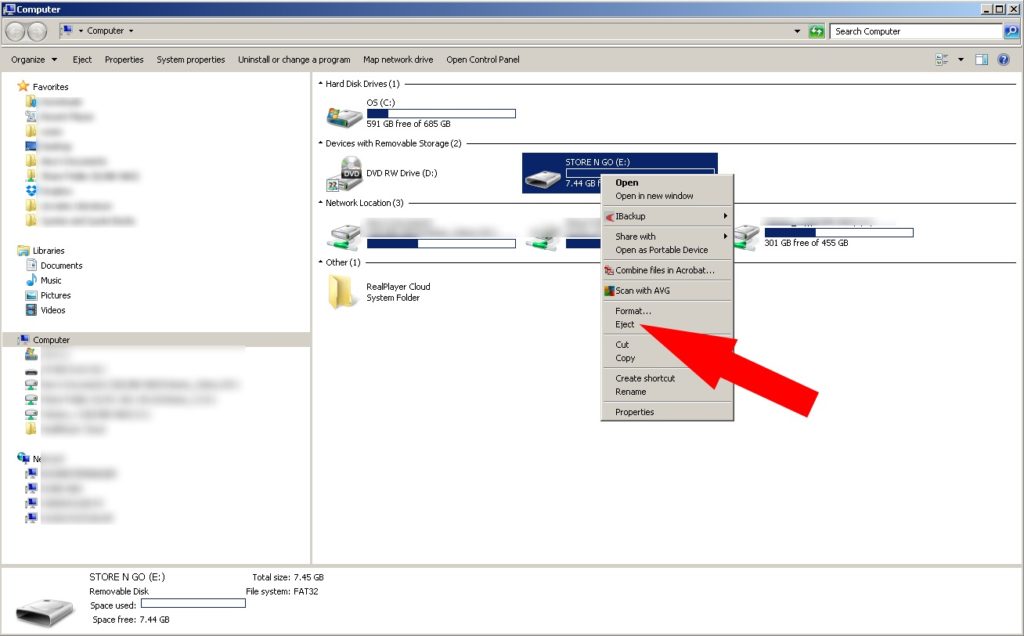

Is it necessary to eject a USB drive properly from Mac? Some of you always choose to remove the USB drive directly from the computer, and there is nothing wrong happens. So, you may think it is unnecessary to eject the drive safely. However, the answer to this question is probably not. But, you still bare the risk of data loss and getting a corrupted USB drive.
How do you remove the USB drive from your computer? Just pull it out of PC or eject a USB drive properly from Mac?
How to safely eject USB devices on a Mac.
Sometimes, when you remove a USB drive without clicking to eject it firstly, you may get a warning saying “Disk Not Ejected Properly”.
Seeing this, you may ask: is it really necessary to properly eject a USB drive from the computer?
The answer is not absolute. When you are copying a file from the computer to a USB drive, you need to wait patiently until the copying process is finished. Then, after a while, you can remove the USB directly without clicking to eject it in advance.
Although yanking the USB drive rudely is not the official procedure, many of you don’t encounter some issues after doing this. Moreover, you need to pay attention to this issue: you can get a corrupted file or a damaged USB drive.
So, even you are not afraid of losing data or getting a bad USB drive, it is still necessary to know what may happen if you don’t properly eject a USB drive from your computer.
https://washingtondownload.mystrikingly.com/blog/feeding-frenzy-2-online-game-play. Firstly, we will take some context for example.

When you are copying a file from Mac to the USB drive, the machine is actually using something called write cache rather than transferring the files from one drive to another drive directly. Using the write cache is more efficient than transferring a file.

During the write process, the file is written into the drive’s memory until the process finishes. But indeed, the write process is not finished yet.
Now, if you want to remove the USB drive from your computer, you need to click on the drive icon to eject it. Then, the computer will tell the USB drive that it’s time to finish the write cache. Then, it can be finished.
Send message to xbox one from phone. In theory, write cache is the key during the whole transferring process. From the above explanation, you can know that you think the copying process finishes, but in fact, it is not. So, it is recommended to safely remove USB or properly remove a flash drive from your computer.
So, what will happen if you don’t do so? Can i run alexa on my mac.
Firstly, you may get a corrupted file after you yank the USB drive from your Mac rudely due to the copying process is finished by chance. Secondly, this rude operation may corrupt the USB drive.
If the file is damaged, it is lucky that you still have the original file. But, if the USB drive is damaged, the thing will be a little complex.
So, it is recommended to eject a USB drive properly.
It is fortunately that this professional Mac data recovery software - MiniTool Mac Data Recovery can help you to recover your files from the USB drive if you lose your data due to improperly removing method.
Also, if you encounter this issue when you are using Windows computer, you can try the free data recovery software - MiniTool Power Data Recovery which is designed run on Windows 10/8/7.
How to Eject USB from MAC – Disconnecting a flash drive or external HD from a computer is a procedure that requires caution and it is always necessary to inform the system that you want to do this to prevent data from being corrupted. However, unlike Windows, Mac OS X does not display a Device Manager. TechTudo has prepared a special tutorial with three ways to eject an external disk from Mac OS X to safely remove it.
Option one. By default, external disks are mounted on the desktop. To eject a flash drive or HD, just right-click on the icon and, in the context menu, click “Eject”;
Option two. In any window of the Finder, just click on the “Eject” button, to the right of the name of the flash drive or external HD, in the sidebar;
Option 3. The simplest way, however, is to drag the disk to the Recycle Bin. To do this, on the desktop, just click on the icon it and drag to the “junk” at the right end of the Dock. Edit photo mac preview. Red giant universe 2 crack mac.
Ready! However, before ejecting a flash drive or HD, remember to close all applications that are reading or writing information to the external disk. Done this, just eject to remove it safely and have no more worries.
